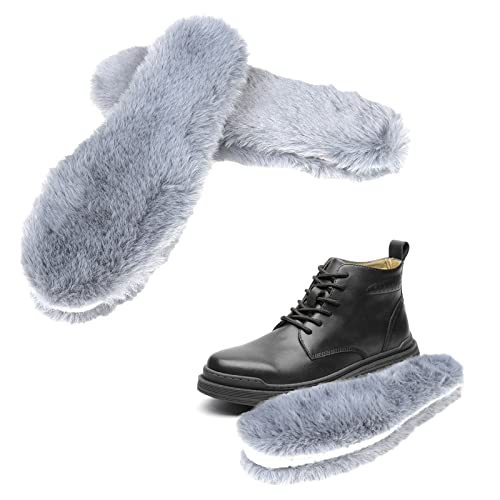You are using an out of date browser. It may not display this or other websites correctly.
You should upgrade or use an alternative browser.
You should upgrade or use an alternative browser.
Magpie Color?
- Thread starter Bunnylover
- Start date

Help Support Rabbit Talk Forum:
This site may earn a commission from merchant affiliate
links, including eBay, Amazon, and others.
I honestly don't know what she is.
does she have shaded in her background at all? She looks broken to me but that face says something odd is going on.
That looks like it might be a sable magpie , or maybe a broken sable magpie, since it's spotted instead of banded/striped. The nose marking and the pale parts on the back look like the sepia tones produced by the sable aka shaded allele <c(chl)>. The only hesitation I have is what appears to be orange coloration on the ears, which should not be able to be there if there is a sable allele in charge.Is my Mini Rex a Magpie?
If the color appearing on my monitor is inaccurate and the ears are actually a pale sepia rather than orange (light sepia can look a bit yellowed), the rabbit could be a broken sable, except there shouldn't be both gray and black spots on her back and ears. A broken sable could have both gray-brown and black coloration, but it would be in a shaded pattern rather than discrete spots of each all over the body. Discrete patches suggest harlequin, and a sable harlequin would be a magpie, since the sable <c(chl)> blocks expression of yellow pigment (pheomelanin).
Last edited by a moderator:
MsTemeraire
Well-known member
- Joined
- Feb 1, 2022
- Messages
- 305
- Reaction score
- 406
That pattern is called Dalmatian Rex in Europe, but the lighter grey patches would be a DQ. You could try to breed bicolour Dalmatian, or use her to breed Tricolour Dalmatian.
Bunnylover
Member
Thank you. She doesn’t appear to have any orange on her.That looks like it might be a sable magpie or sable point magpie, or maybe a broken sable magpie, since it's spotted instead of banded/striped. The nose marking and the pale parts on the back look like the sepia tones produced by the sable aka shaded allele <c(chl)>. The only hesitation I have is what appears to be orange coloration on the ears, which should not be able to be there if there is a sable allele in charge.
If the color appearing on my monitor is inaccurate and the ears are actually a pale sepia rather than orange (light sepia can look a bit yellowed), the rabbit could be a broken sable, except there shouldn't be both gray and black spots on her back and ears. A broken sable could have both gray-brown and black coloration, but it would be in a shaded pattern rather than discrete spots of each all over the body. Discrete patches suggest harlequin, and a sable harlequin would be a magpie, since the sable <c(chl)> blocks expression of yellow pigment (pheomelanin)

$19.79
$35.95
Complete Guide To Fasting: Heal Your Body Through Intermittent, Alternate-Day, and Extended Fasting
Amazon.com

$12.29
$27.99
The Fast Metabolism Diet Cookbook: Eat Even More Food and Lose Even More Weight
savontextbooks

$14.32
$24.00
Top Secret Restaurant Recipes: Creating Kitchen Clones from America's Favorite Restaurant Chains: A Cookbook
Amazon.com

$2.99 ($3.19 / lb)
Kaytee Alfalfa Cubes for Rabbits, Guinea Pigs, and Other Small Animals, 15 oz
Amazon.com

$209.99
Hay Bale Sampler Probe, 24" Depth, Drill-Type for Sampling Hay Bales. Includes Bagging Attachment.
Best Harvest Inc.

$12.49 ($0.39 / Ounce)
$13.66 ($0.43 / Ounce)
Horsemen's Pride Himalayan Salt Block on Rope for Horses, 2.2 Pounds, SS22
Amazon.com

$9.99 ($3.33 / Count)
Springtime 3pcs Rabbit Fur Headbands for Women Girls Unique Faux Furry Hair Headband Soft Luxury Headwear Warm Hair Accessories
Chunxia Accessories

$18.03
$45.99
FITORY Womens Open Toe Slipper with Cozy Lining,Faux Rabbit Fur Cork Slide Sandals Size 8
FITORY-SHOES

$14.63
$29.99
Fit Men Cook: 100+ Meal Prep Recipes for Men and Women―Always #HealthyAF, Never Boring
Amazon.com

$10.61 ($0.13 / Ounce)
Himalayan Nature 100% Natural Himalayan Rock Deer Salt Block - Animal Licking Mineral Salt Block ,5 Lbs, 2x4x8 inch
Amazon.com

$15.12
$17.99
Basic Butchering of Livestock & Game: Beef, Veal, Pork, Lamb, Poultry, Rabbit, Venison
Amazon.com

$58.00 ($0.14 / Ounce)
Wakefield Extra Large Virginia Peanuts for Animals, 25 LBS
Monroe Systems for Business

$49.99
Neiicty Very Warm Womens Rabbit Fur Leather Gloves for Women Touchscreen Texting Driving Gloves Smooth Texture Large
Shenzhen xinrui Trading Co., Ltd.

$16.90 ($0.38 / Ounce)
$19.20 ($0.44 / Ounce)
Pumpkin Tree Peter Rabbit Organics, Banana, Mango, and Kale, 4 Squeeze Pouch, Mango, Broccoli & Kale, 4.4 Ounce (Pack of 10)
Amazon.com
Bunnylover
Member
Thank you, I cannot see her background, though.does she have shaded in her background at all? She looks broken to me but that face says something odd is going on.
Bunnylover
Member
I will.That pattern is called Dalmatian Rex in Europe, but the lighter grey patches would be a DQ. You could try to breed bicolour Dalmatian, or use her to breed Tricolour Dalmatian.
That makes it more likely that she's a broken sable magpie.Thank you. She doesn’t appear to have any orange on her.
As far as I know, you can't get both black and gray on the same rabbit; gray (aka blue) is a dilute black, and barring some weird situations like chimerism, a rabbit is either dilute <dd> or not <D_>. So it makes sense that what looks like light gray on your bunny is actually sepia from a dominant sable allele.
Since broken sable would look shaded, rather than having a mixture of distinct and separate black and gray spots, my suspicion is that a harlequin allele is breaking the dark and light colors apart, analogous to what it does in a black harlequin, even though the light and dark in this case are not derived from eumelanin and pheomelanin as in a normal harlequin. You can see this separation of light and dark markings clearly on her ears and especially her nose marking; so my guess would be a broken sable magpie, aka harlequinized broken sable.
The interesting thing is that based on the pale coloration alone, I'd be inclined to say she's a sable point (i.e. a non-extension sable)... But she could not be both non-extension (which is created by two recessive alleles <ee>) and at the same time harlequinized <e(j)_>, since they are both on the E locus, and each rabbit can carry only two alleles at each locus. But the harlequin allele does some pretty strange things.
To find out what if she really is a sable, you could breed her to a himalayan <c(h)_>; if you got any full-color rabbits you'd know she's NOT sable, while if instead you got sables, you'd know she's a sable. You could also use a REW <cc>; again, if you got any sables you'd know she is a sable. But since you often won't know what else the REW carries, results might not be as clear.
If you're more curious about the harlequin, breed her to a non-extension color like red, which is a non-extension chestnut. If she has a harlequin allele, you'll have a good chance of getting harlequins and/or orange/black tricolors.
Looking around online, I found this image:

The site https://vegasvelvetsrabbitry.weebly.com/magpies-and-piebalds.html calls it a piebald (aka broken) sable point. He looks a fair bit like your rabbit, but the image is not clear enough to see if he has those gray spots among the black/dark spots on his back and sides. He also does not have that clear demarcation on his nose marking.
That pattern is called Dalmatian Rex in Europe, but the lighter grey patches would be a DQ. You could try to breed bicolour Dalmatian, or use her to breed Tricolour Dalmatian.
Dalmatian, as I understand, is a particular pattern found on a broken colored rabbit. It is not recognized by the ARBA, and in the US would typically just be called "broken."I will.
I would probably avoid breeding for tricolor (which is a broken harlequin) since in the US, tricolor varieties do not include sable coloration, and even if it's not expressed in the bunnies it can still lurk for along time. You could breed her for brokens, which in Mini Rex includes sable point, but you'd have to watch her progeny carefully (dalmation or other patterns), to avoid harlequinized broken sables, aka broken sable magpies like she may be.
Question for @MsTemeraire: I somewhere got the impression that a nose butterfly or spine markings were not desirable in dalmatian rex. Can you say what the European standard calls for in this variety?
Bunnylover
Member
Thank you @Alaska Satin for the explanation. How can I tell the difference between broken magpie and a broken?
MsTemeraire
Well-known member
- Joined
- Feb 1, 2022
- Messages
- 305
- Reaction score
- 406
Not sure of the EE standard (or standards in individual countries, which may differ) but here is the BRC one. As the Dalmatian was originally a European breed, the BRC standard will be very close to those in Europe.Question for @MsTemeraire: I somewhere got the impression that a nose butterfly or spine markings were not desirable in dalmatian rex. Can you say what the European standard calls for in this variety?

That's the rub - as far as I know you can't, unless you know for sure that the rabbit did NOT have a broken parent. Brokens tend to have spots/blankets, and magpies tend to have color running in longer patches/stripes, but when you combine them, those already iffy distinctions break down. If I see a broken colored rabbit with half a nose marking, or color on one ear and not the other, I think magpie, but I have seen normal brokens with those markings. I have never seen a broken with color on its feet, so if the rabbit does, I'd assume it's a magpie but not broken.Thank you @Alaska Satin for the explanation. How can I tell the difference between broken magpie and a broken?
You can test breed a questionable magpie/broken magpie rabbit with a solid non-harlequin mate. If it's got a broken allele, you should get broken colored kits, though even that's not a sure thing, as each and every kit has a 50% chance of being broken, and sometimes statistics do not cooperate with inquiring minds.
BEW rabbits (blue-eyed white, produced by two copies of the vienna allele <v v>) present a similar problem when crossed with brokens. One copy of the vienna allele can produce white patches in numerous places, and if you add broken, you end up with the same confusion. Often this cross will result in "brokens" that are missing part or all of the nose marking, for instance. Because of these issues, when breeding magpies or BEWs, I've tried to stay away from crossing brokens into the line.
Thanks for this, but I can't read it. It's very small, and when I zoom in, it becomes so blurry I can't make it out. But I'd love to be able to read it!Not sure of the EE standard (or standards in individual countries, which may differ) but here is the BRC one. As the Dalmatian was originally a European breed, the BRC standard will be very close to those in Europe.View attachment 42612
MsTemeraire
Well-known member
- Joined
- Feb 1, 2022
- Messages
- 305
- Reaction score
- 406











































